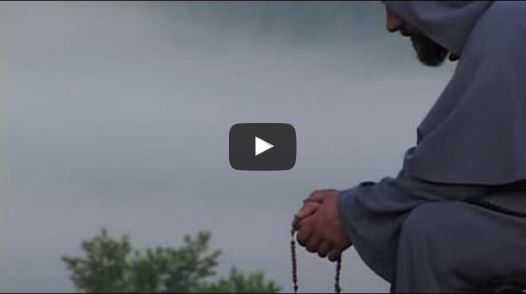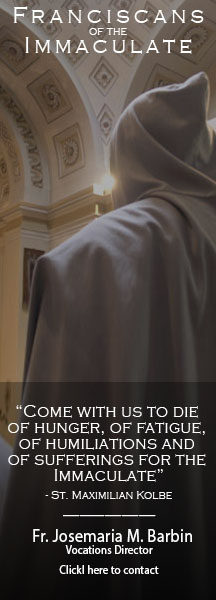“I am a Catholic priest.” With this statement, we have in just a few words the “ID card” of St. Maximilian Kolbe, a Polish Franciscan priest martyred at Auschwitz August 14, 1941, seventy years ago. When the fierce Lagerführer Karl Fritzsch, in reprisal for the escape of a prisoner, chose ten prisoners for condemnation to starvation and dehydration in the death bunker, “number 16670,” Fr. Maximilian M. Kolbe, was not among them. When one of the condemned, Sergeant Francis Gajowniczek, began crying out, “my poor wife and my poor children,” Fr. Kolbe, driven by the supernatural force of charity, stepped out of the ranks and, before the astonished eyes of the Commandant, presented himself, saying, “I want to die in his place.”
It was a miracle that Commandant Fritzsch did not shoot him dead on the spot. He asked with scorn, “Who are you?” and Fr. Kolbe very calmly and firmly said, “I am a Catholic priest.”
This reply is truly his ID card, and you could even say “Catholic priest” was his true first and last name. St. Maximilian surely could have replied, “I am Maximilian Kolbe,” or “I am a Franciscan friar,” or even, “I am the leader of a large religious community.” Instead, he responded with the most noble and sacred title, written in the depths of his soul in an indelible sacramental character, the character of Holy Orders: “I am a Catholic priest.”
You can understand right away that, as soon as St. Maximilian showed his “ID card” as a Catholic priest, offering himself as a sacrificial victim in another’s place, immediately Commandant Fritzsch accepted the exchange, thinking cynically to himself, “Good! That will be one less priest!”
Priest and victim of the Shoah: is this not true priesthood? Is it not Jesus’ priesthood? “Sacerdos tuae Victimae,” a devout author once marvelously wrote, “Victima tui sacerdotii” (“priest of your victim, [sacrificial] victim of your priesthood”), for Jesus was both priest and victim. It is a wonderful summary of the essence and mission of priesthood. Jesus, the Supreme and Eternal High Priest, made it clear that there can be no separation between the priest and the victim. Every priest is authentic inasmuch as he is a victim in imitation of Jesus the priest.
Catholic priest and sacrificial victim: you could say that these two phrases are like the systole and diastole of a priestly heart. They express two realities that relate by osmosis and symbiosis, and which are one in the divine reality of the priesthood of Christ in which every priest participates.
At Auschwitz, this is just how St. Maximilian Kolbe appears: a priest like Jesus the priest, the priest and victim; he was a priest and martyr, a priest immolated like a lamb, offering himself as a total sacrifice in the hands of these new Pharisees and high priests of the bloodthirsty power that the Nazis were. Just like Jesus Crucified, St. Maximilian too, to save a brother man, voluntarily offered himself as a holocaust: “oblatus est quia ipse voluit” (Is 53:7: “He was offered because it was his own will”).

